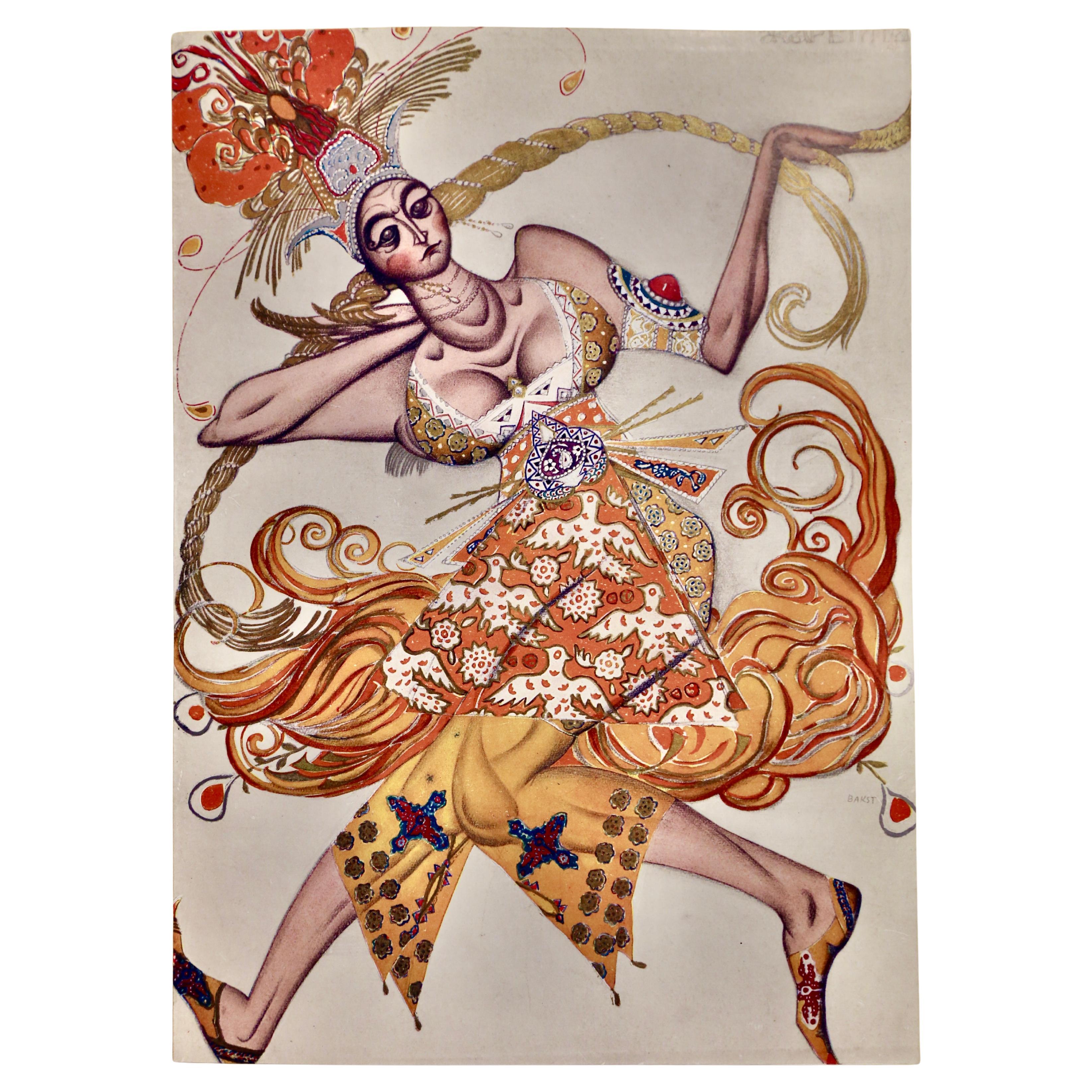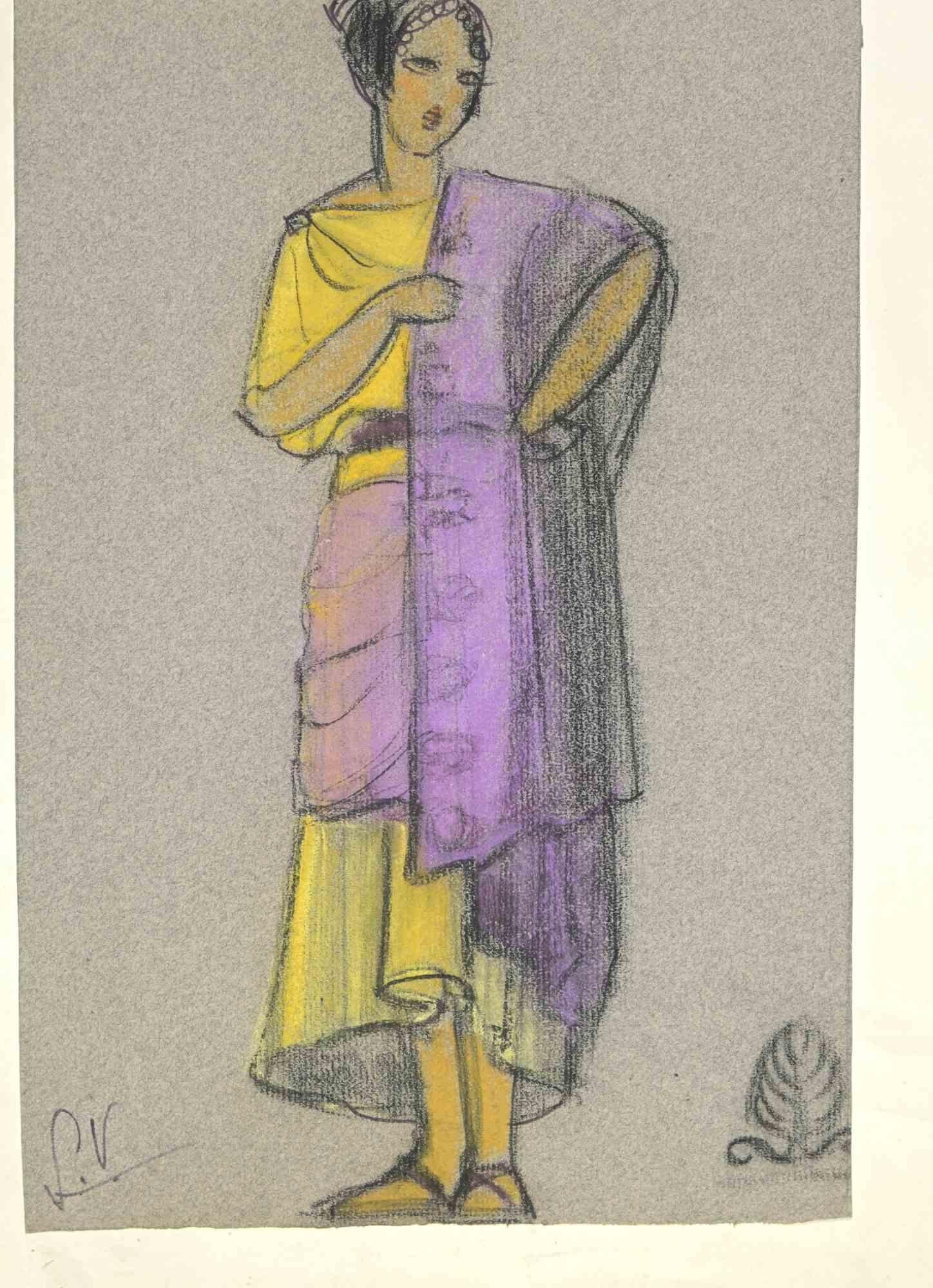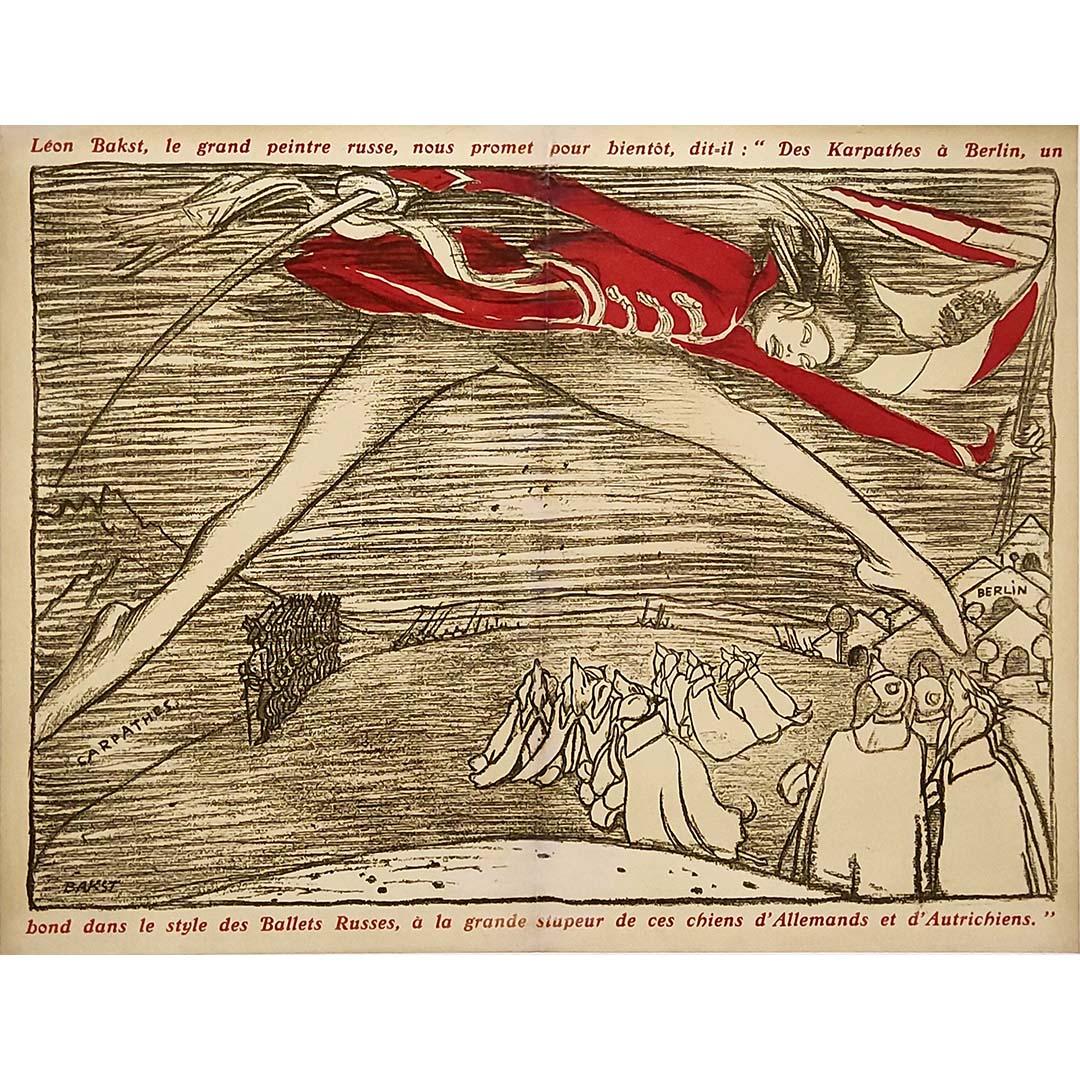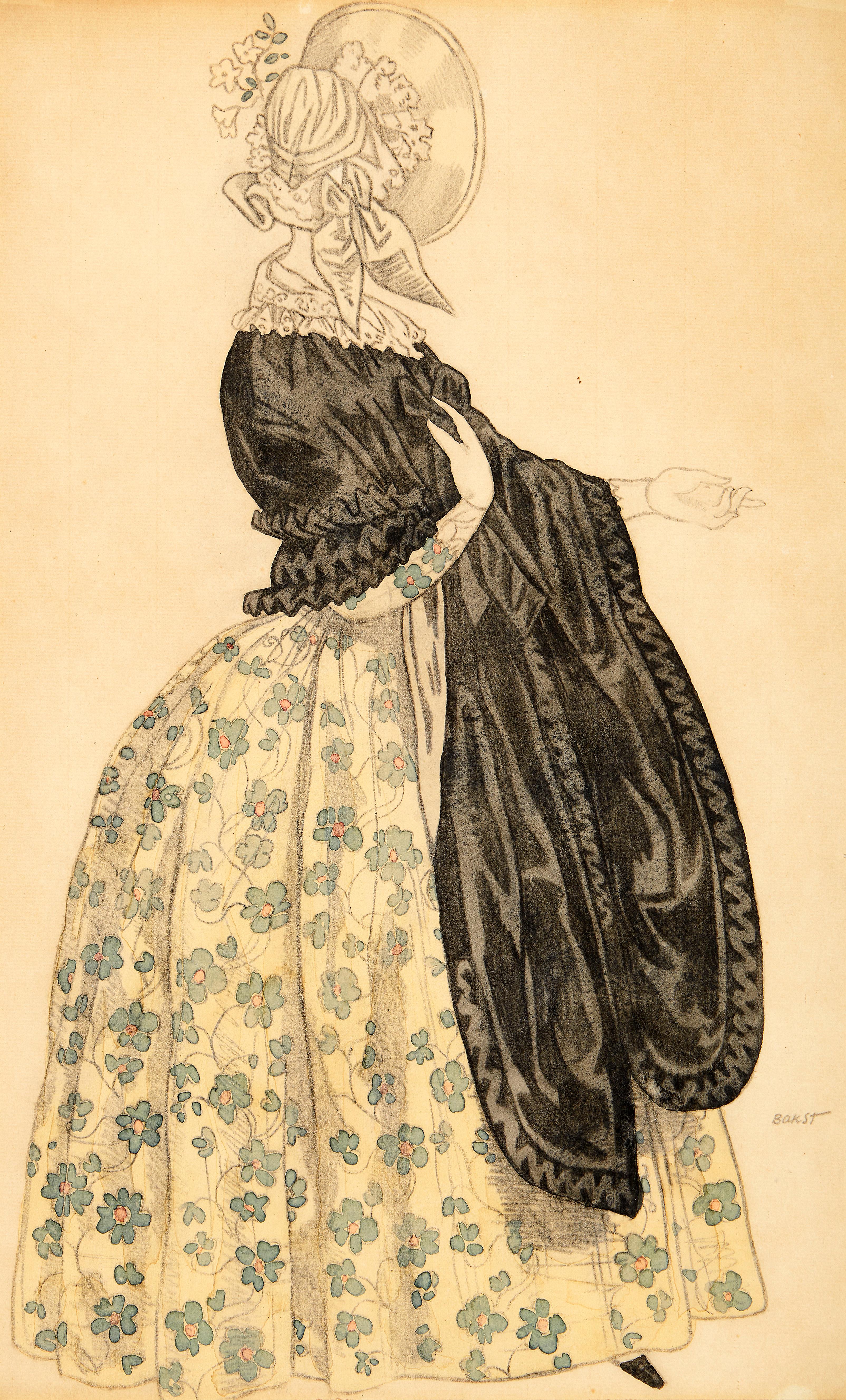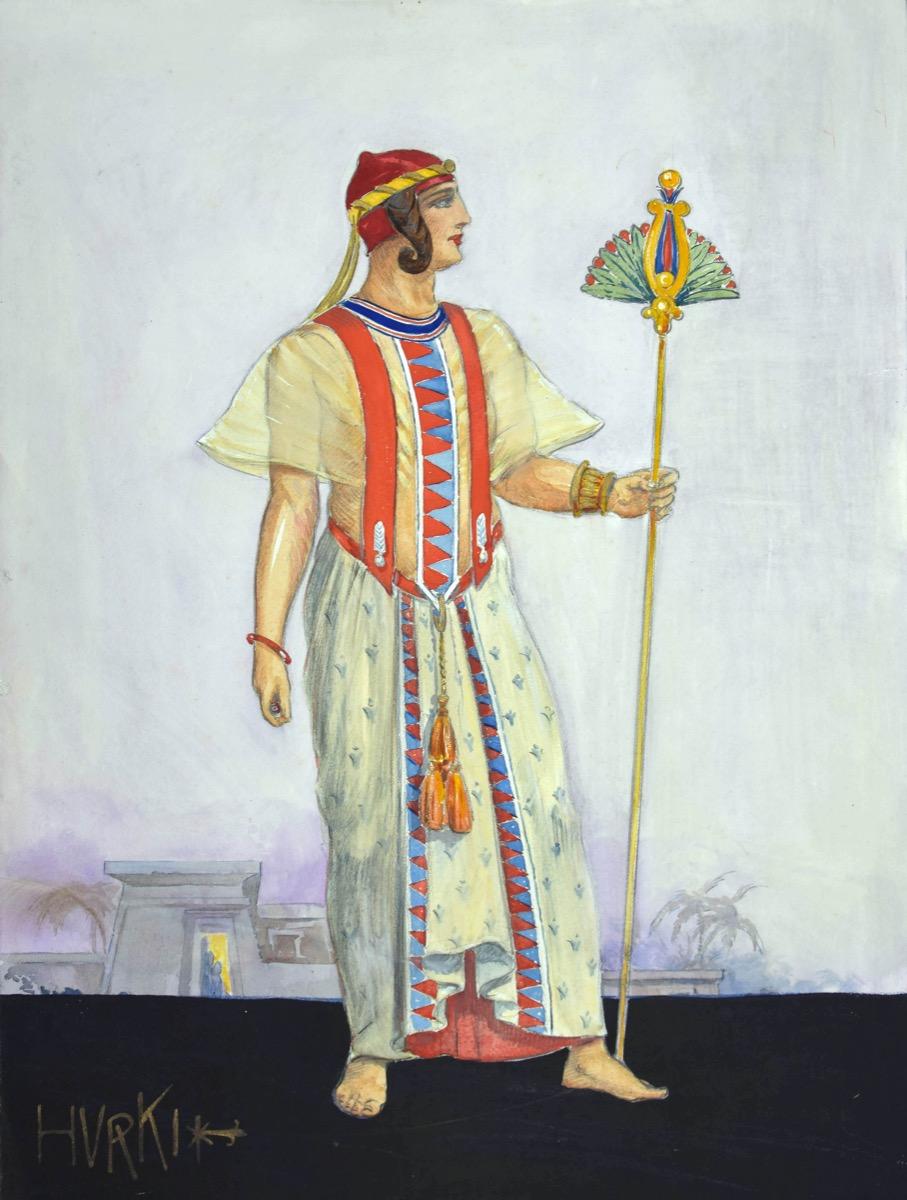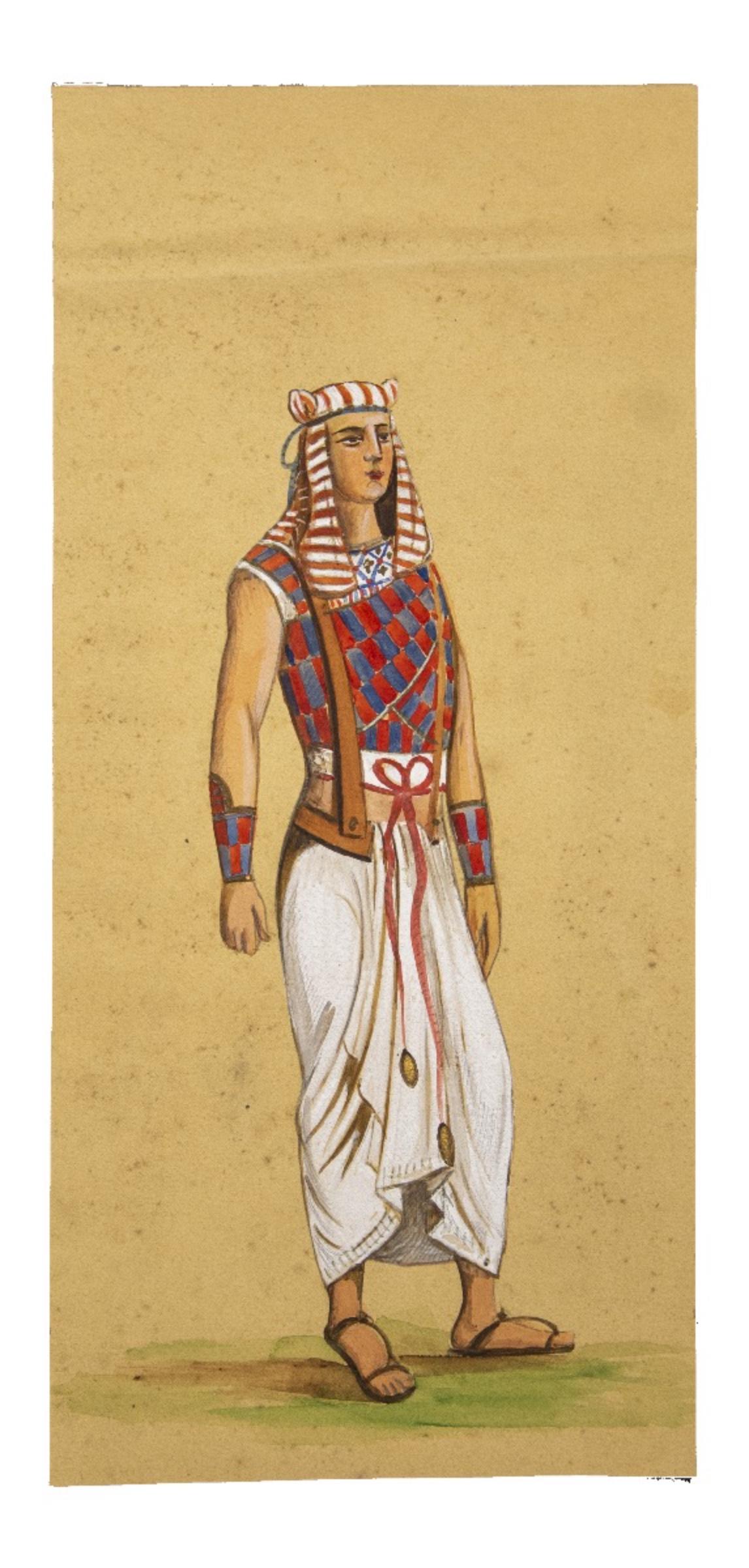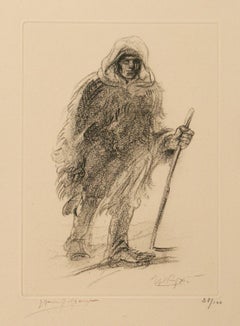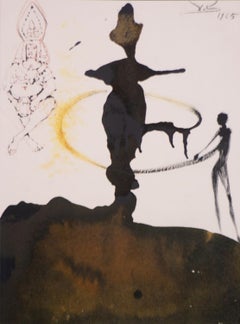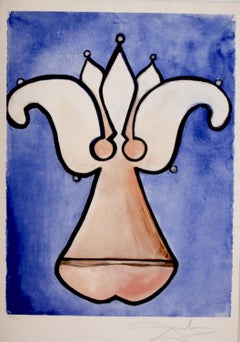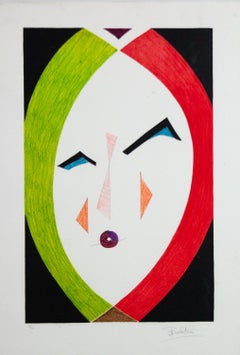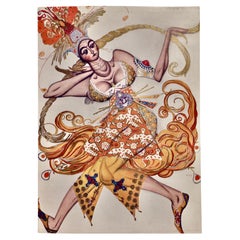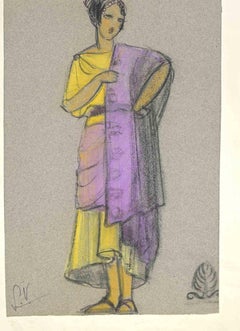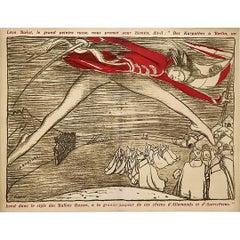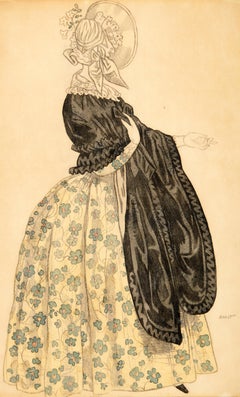Items Similar to Leon Bakst Three Costume designs from Le Dieu Bleu Ballet 1911
Want more images or videos?
Request additional images or videos from the seller
1 of 12
Leon BakstLeon Bakst Three Costume designs from Le Dieu Bleu Ballet 191120thc.
20thc.
$600
£467.13
€531.20
CA$862.63
A$947.33
CHF 494.72
MX$11,306.83
NOK 6,267.57
SEK 5,841.63
DKK 3,967.38
About the Item
Three iconic Leon Bakst costume designs for Le Dieu Bleu ( The Blue God ) a ballet choreographed by Michel Fokine and written by Cocteau. The ballet premiered in Paris in 1912. It tells the story of a girl who tries to dissuade her fiancé from becoming a priest and is thereafter tormented by demons; but she is eventually saved by the Blue God, a part performed by Vaslaw Nijinsky, the greatest male dancer of his time. Fokine’s choreography and Bakst’s costumes drew upon Siamese dance and Hindu sculpture. These three prints are vintage reproductions quite unlike the reproductions of today. They each have the look of original watercolors and are backed on heavy grey rag paper with a hand painted gold border. Properly framed they will definitely look like the original drawing. The size of the actual prints varies slightly but the background paper size is consistently 10.5 x 15.5.
Born in Russia in 1866, Léon Bakst belonged to a young generation of European artists who rebelled against 19th-century stage realism, sparking a revolution in theatre design. His fame lay in the sets and costumes he designed for Serge Diaghilev’s (1872 – 1929) legendary dance company the Ballets Russes, and his huge pageant spectaculars for the dancer and patron of the performing arts, Ida Rubinstein (1883 – 1960). After graduating secondary school, he traveled to St. Petersburg to study at the St. Petersburg Academy of Arts as an unenrolled student, working as a book illustrator to support himself. In order to help pay the bills, he also taught art to the children of Grand Duke Vladimir. Marc Chagall was also one of his students. He began exhibiting in the 1890’s with the Society of Watercolorists, as he continued his studies at the Academie Julian, making important connections with prominent artists. In the late 1890’s he founded, along with Sergei Diaghilev, the Mir Iskusstva, or “World of Art,” movement. He illustrated many graphics for their publication, drawing him praise and popularity. Until the end of the century, he continued to paint and receive commissions, from as high up as Tsar Nichols II himself. Scheherazade, performed in 1910 at the Théâtre national de l’Opéra in Paris, featuring the dancers Vaslav Nijinski and Ida Rubinstein, proved a particular sensation, creating a sense of rich, fevered claustrophobia and mystery – a living canvas of sensuality and decadence. Bakst’s costumes are richly decorated with myriad motifs and decorative shapes. Dense surface textures mix appliqué with painting, dying, and embroidery using flocking, beading, sequins, metal studs, braids and decoration, pearls and jewels. Bakst gained international fame for his celebrated designs, and came to be regarded as the artistic director of the Ballets Russes during their heyday (1909 – 14). He died in 1924 but his influence was far-reaching, even beyond the world of ballet. His extraordinary designs spilled over into both fashion and interior design, introducing looser-fitting clothing styles and sweeping away drab colours.
- Creator:Leon Bakst (1866 - 1924, Russian)
- Creation Year:20thc.
- Dimensions:Height: 10.5 in (26.67 cm)Width: 15.5 in (39.37 cm)
- Movement & Style:
- Period:
- Condition:
- Gallery Location:Paonia, CO
- Reference Number:1stDibs: LU780311920332
About the Seller
4.9
Gold Seller
Premium sellers maintaining a 4.3+ rating and 24-hour response times
Established in 1978
1stDibs seller since 2017
131 sales on 1stDibs
Typical response time: 3 hours
- ShippingRetrieving quote...Shipping from: Paonia, CO
- Return Policy
More From This Seller
View AllPhysionomie Du Front (Front View)
By Henry de Groux
Located in Paonia, CO
Henri DeGroux (1866-1930) was a Belgian Symbolist painter, sculptor and lithographer. He was known for his allegorical, religious and historical subject matter. He became an inspired...
Category
1910s Symbolist Figurative Prints
Materials
Lithograph
The Dance of Herodias Daughter, 1967 Salvador Dali lithograph Bibila Sacra
By Salvador Dalí
Located in Paonia, CO
The Dance of Herodias Daughter, 1967 is a colored lithograph from the gouache original on heavy rag paper from Salvador Dali’s five volume Biblia Sacra Suite published in Rome...
Category
1960s Abstract Abstract Prints
Materials
Lithograph
Lys from Anamorphoses suite by Salvador Dali
By Salvador Dalí
Located in Paonia, CO
Salvador Dali’s Lys ( Anamorphoses ) is one of five lithographs from the suite “Anamorphoses ” published by Jean Schneider, Basil 1972. According to Albert Field when one of these prints is placed flat on a table with a cylindrical mirror...
Category
1970s Surrealist Abstract Prints
Materials
Lithograph
Mystery of Womanhood 1947 original signed Emilio Pucci Kaleidoscopic lithograph
By Emilio Pucci
Located in Paonia, CO
Mystery of Womanhood is an original 1947 pencil signed limited edition ( 31 / 100 ) lithograph by Emilio Pucci. It is from a set of six lithographs...
Category
1940s Abstract Expressionist Abstract Prints
Materials
Lithograph
Original Etching by Leonor Fini
By Leonor Fini
Located in Paonia, CO
An etching by Leonor Fini depicting a gnarly old man with two youthful angels one sitting at his feet and the other standing close to his right side. This is a signed limited edition etching numbering 62 out of 100. There is also a signature by the artist embossed in the paper just below the pencil signature. The paper is very fibrous and has a couple of inherent creases that are part of the makeup of the fibrous paper. These are to the right of the figures. The edges of the paper are deckled. The paper size is 25.75 x 20 Image size 15.50 x 12.50. This original etching is in very good condition.
Argentinian-born artist Leonor Fini (1907-1996) is considered one of the great female artists of the twentieth century. She moved to Paris in the early 1930’s where she spent most of her life and almost immediately formed friendships with Salvador Dali, Cartier- Bresson, Max Ernst and other intellectuals of the time. At twenty five she had her first one person show in Paris and was included in the 1936 pivotal exhibition at MOMA…Fantastic Art, Dada and Surrealism…..and that same year had an exhibition at a famous avant garde gallery in New York. Although Fini never considered herself a Surrealist she maintained close personal relationships with several members of the group. One can see how their ideology influenced her work but she remained firmly rooted in the tradition of Symbolism, Metaphysics and Italian and German Romanticism Her works can be found in most important collections of modern art around the world.
Fini was renowned as a portraitist and as a painter of erotic sexual tensions with a mysterious atmosphere. She was adamant about being independent and not belonging to any one group. She lived life on her own terms and is sometimes referred to as …..the female Dali. She was also involved with designing for fashion and creating elaborate sets for opera and theatre. As a feminist she was definitely ahead of the times. She produced the first erotic male nude...
Category
1970s Surrealist Figurative Prints
Materials
Etching
Sapeurs- Pompiers De Paris, Armee de Ligne pub. Lemercier lithograph 1861
By Édouard Armand-Dumaresq
Located in Paonia, CO
Sapeurs- Pompiers De Paris, Officier et Soldat ( Grandes Tenures).... Fire Brigade In Paris, Officer and Soldier (Large Tenure ) shows two mustachioed French soldiers from the A...
Category
1860s Figurative Prints
Materials
Lithograph
You May Also Like
Histoire de Leon Bakst Rare French 1924 Edition #94 of 345 Ballet Russes designs
By Leon Bakst
Located in Glenford, NY
Histoire de Leon Bakst
Copyright by Edition “L’Art Russe” Alexandre Kogan
ECrite par Andre Levinson
Societe D’Editions et de Librairie Henri Reynaud PARIS
This is number 94 of ...
Category
Vintage 1920s French Art Nouveau Books
Materials
Paper
Theatrical Costume - Drawing by Simone Vaulpré - Early 20th Century
Located in Roma, IT
Theatrical Costume is a drawing made by Simone Vaulpré during the early 20th century.
Charcoal and pastel Hand signed.
Good condition apart from some tears in the lower part.
The ...
Category
Early 20th Century Modern Figurative Drawings and Watercolors
Materials
Charcoal
Work by Léon Bakst - early 20th-century wartime propaganda Avant-garde
By Leon Bakst
Located in PARIS, FR
This striking work by Léon Bakst, titled “Le grand peintre russe nous promet pour bientôt…” (“The great Russian painter promises us soon…”), vividly captures the spirit of early 20th...
Category
1910s Prints and Multiples
Materials
Linen, Paper, Lithograph
Woman with flower dress
By Leon Bakst
Located in Ottikon, CH
Privat Collection Switzerland
Léon Bakst, born Lev Samoylovich Rosenberg in Grodno, Russia (now Hrodna, Belarus), was a renowned Russian painter and stage and costume designer of ...
Category
Early 20th Century Figurative Drawings and Watercolors
Materials
Paper, Watercolor
Hurki Costume for an opera - Pencil and watercolor drawing by Taho - 1930s
Located in Roma, IT
Costume for an opera is an original artwork realized by Taho in the 1930s.
Beautiful pencil and watercolor drawing on cardboard.
Good conditions.
Category
1930s Modern Figurative Drawings and Watercolors
Materials
Paper, Watercolor, Pencil
Costume for Aida - Tempera and Watercolor - 1920s
Located in Roma, IT
Costume for Aida is an original drawingg in tempera and watercolor on brownish paper realized in 1920 ca. by an Anonymous Italian artist of the early 20th Century.
The artwork repre...
Category
1920s Modern Figurative Drawings and Watercolors
Materials
Tempera, Watercolor
$320 Sale Price
30% Off
